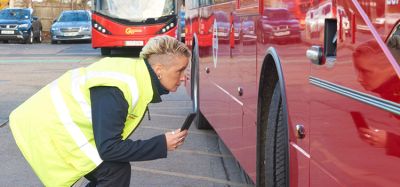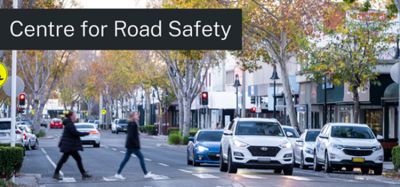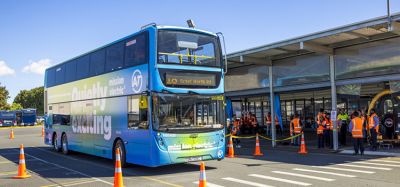Supporting transport innovation through future research programmes
- Like
- Digg
- Del
- Tumblr
- VKontakte
- Buffer
- Love This
- Odnoklassniki
- Meneame
- Blogger
- Amazon
- Yahoo Mail
- Gmail
- AOL
- Newsvine
- HackerNews
- Evernote
- MySpace
- Mail.ru
- Viadeo
- Line
- Comments
- Yummly
- SMS
- Viber
- Telegram
- Subscribe
- Skype
- Facebook Messenger
- Kakao
- LiveJournal
- Yammer
- Edgar
- Fintel
- Mix
- Instapaper
- Copy Link
Posted: 31 October 2016 | Jayne Diffin, Head of Innovation and Development, TRL | No comments yet
Cyber security, virtual reality and machine learning will drive the future of transport says Jayne Diffin, Head of Innovation at the Transport Research Laboratory, as the organisation reveals research projects being delivered over the coming year…
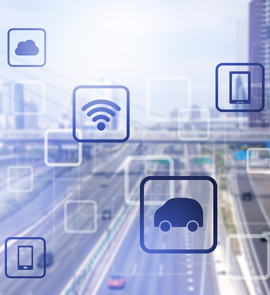

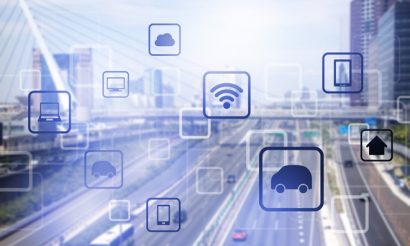

The unprecedented rate of technological change that we are experiencing is informing and evolving the ever-changing global transport landscape. Through our annual research programme, Transport Research Laboratory (TRL) plays an important role in facilitating research and innovation activities to enable the transport industry to benefit from these technological advancements, without compromising the safety, efficiency or quality of the services provided, or the infrastructure they depend upon. Some of the critical topics that are being explored as part of our research programme this year, have emerged from other industries and need to be better understood within the transport context.
Connectivity, cybersecurity and IoT
The Internet of Things (IoT) concept is rapidly moving from concept to reality and we’re starting to see more applications for transport and mobility services. Proliferation of communication technologies and ever decreasing size and cost of communications components is helping to facilitate this step towards automated systems and smart infrastructure services – enabling vehicle to vehicle, vehicle to infrastructure and infrastructure to infrastructure connectivity. With a transport network comprised of millions of assets, the potential to connect and communicate with each end-point affords some great opportunities for future transport services and asset management. However, it is critical that we understand the cybersecurity implications of the connectivity that is enabling IoT in the transport domain to protect this network of information from external threats.
Data science and machine learning


Jayne Diffin, Head of Innovation and Development, TRL
We already have an abundance of data sources within the transport domain. As we move towards an increasingly connected transport network, the richness, complexity and volume of data generated will explode. The challenge is to understand and exploit the value that may be locked within these vast datasets. The application of data science techniques such as machine learning will be vital to support this process as we step towards an automated transport environment governed by artificial intelligence.
Virtual reality
Although it had a somewhat troubled infancy, immersive virtual reality applications are now becoming much more accessible and useful. The work we are funding on virtual reality this year builds on the results of a completed project last year and will be exploring how the use of this technology might improve vehicle design and ultimately lead to safer driving behaviour.
Mental health and head injuries
Mental health is an increasingly important and emerging issue for transport. At TRL we believe that transport services should be safe and accessible for all users. Although there has already been much work to improve the safety and accessibility of transport for those with physical mobility challenges, more work is needed to understand how those with mental health issues can be challenged in using the transport system and what interventions may be put in place to support their needs.
Another important area of safety is head injuries. There are still too many collisions occurring that result in traumatic head injuries. Through TRL’s accident investigation and RAIDS capabilities, we will consider the application of state-of-the-art techniques to improve head injury assessments.
Automated vehicle safety
The rapid progression in automated vehicle technology is presenting new challenges. We need to understand the implications of running partially, highly and (eventually) fully automated vehicles alongside regular cars, buses, bicycles and pedestrians. From a user perspective, automated vehicles offer the opportunity to transform the travel experience, turning journey times into opportunities for relaxation or productivity. Concepts for automated vehicles indicate potential changes in seating direction and position for vehicle occupants presenting new challenges to the ways in which passengers are to be protected in the event of a collision. We will be working to understand how vehicle design and safety systems should be adapted to maximise occupant safety in a world of automated vehicles.
From an infrastructure perspective, we need to consider the impact of automation. The automation of heavy goods vehicles (HGVs), in particular through the concept of truck platooning, is one area that is gathering pace. Whilst technology is enabling vehicles to form platoons safely, we need to understand the impact that platoons of close following trucks will have on road infrastructure to ensure that when platoons become commonplace, they do not cause excessive damage to the network.
TRL’s annual research programme is devised by the TRL Academy in response to the challenges facing future transport. Each project is considered on merit of its relevance, potential for market disruption and deliverability. Ultimately, the research programme is there to support and enhance our work alongside government, industry and academia – to help shape policy and legislation, to support transport system design considerations and to assess the feasibility of technological developments. The intention is that the project outcomes support our corporate mission: to produce a transport system that is safe, clean, affordable, accessible and efficient.




